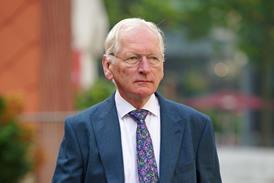A forensic science specialist has paid tribute to solicitors working with a ‘decimated’ legal aid budget after announcing an exit from the UK market.
Contact Traces has provided services to various parts of the criminal justice system since 2006.
Chief scientist Tiernan Coyle, announcing the firm’s departure on its website, said the need for forensic fibre examination ‘is greater than ever’ but ‘the fact that the police suppress that demand is as inexplicable as it is indefensible’.
Coyle said it had been ‘particularly rewarding’ to provide forensic services ‘truly independently’, helping both the prosecution and defence sides of the criminal justice system.
‘I’d like to pay tribute to all our clients from the criminal defence sector,’ Coyle said.
‘Over the years they have faced a daily struggle to get the necessary funds from a decimated legal aid budget; just so they can provide their clients an understanding of the strength of the scientific evidence against them – which is a fundamental human right.’
Coyle said his team were ‘better’ forensic scientists for having worked with defence counsel and solicitors ‘who represent their clients with professionalism and integrity’.
Earlier this year, the organisation posted a blog in which it spoke about the ‘perilous’ state of forensic fibre examination and said it would welcome a landscape ‘where there was no longer two separate markets for prosecution and defence’.
‘We see no need for the government to fund the two strands of the criminal justice system separately,’ the blog stated. ‘There should be room for “experts without labs” in such a system. Scientists should be treated equally in terms of pay regardless of which side of the [system] instructs them.’
In its recent announcement, Coyle claimed Contact Traces was ‘instrumental in securing justice’ in more than 700 cases involving burglars, car thieves, robbers, drug pushers, paedophiles, sex offenders, rapists, kidnappers, armed robbers and murderers.
‘Most of these cases yielded insufficient forensic evidence from DNA, fingerprints and digital evidence alone,’ he said.
‘Offenders and victims wear clothes and always will. They continue to exchange fibres during contact. Clever offenders can take steps to ensure they leave no DNA traces, no fingerprints, avoid areas of CCTV and cover their digital tracks.’
But crime perpetrators, he said, ‘know little’ about fibres and ‘no matter how well they plan they can never predict what their victims will be wearing or what microscopic traces they will be carrying on their clothes when they strike’.



























3 Readers' comments